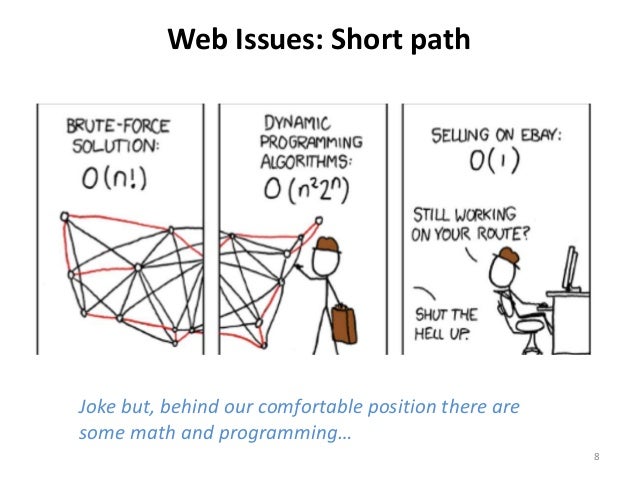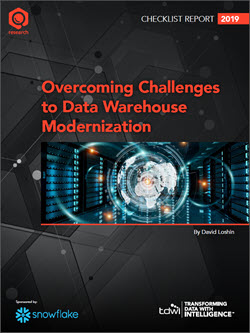Big Data Challenges To Data Warehouse

Every business user knows their pain points. Take five minutes and they will tell you what is painful.Sidney Fernandes, assistant CIO and director of application development, USF HealthBack in 2006, USF Health’s IT team was given an assignment: Create a “single source of the truth” of data – – for financial reporting and other -related activities, said Sidney Fernandes, USF Health’s assistant CIO and director of application development. But the team would have to overcome a chain of obstacles before making that happen.For starters, the team needed to identify, gauge and figure out how to navigate the complexity of the data warehousing task at hand. Then they had to evaluate and, get the system running and deliver results.USF Health executives wanted fast and easy access to financial information and other reports they could use to evaluate faculty and distribute resources. This would require USF Health to use data from many disparate source systems related to clinical productivity, research productivity, educational productivity, expenses and payroll.Fernandes said source systems for the data warehouse implementation include two financial applications, Oracle-PeopleSoft Financials and CODA Financial Management Software; two human resources applications, Oracle-PeopleSoft and Cyborg Systems Ltd. Software; an electronic medical records repository; General Electric Practice Management systems; ambulatory surgery support applications; picture archiving systems; a radiology information system; and various spreadsheets.“We wanted to get all these source systems into a single place so that decision makers could see exactly what a researcher or physician was producing, what grants they had applied for, what articles they had published, how many patients they saw and what USF was spending on them,” he explained.
“That was the genesis of the data warehouse initially.”Business users present data warehousing challengesTwo of the biggest hurdles that USF Health’s IT team faced in its quest included gaining access to the various information sources and.“There were some political hurdles that we had to overcome to allow people to trust us and open up their data to us so we could pull it into the data warehouse,” said Swapna Chackravarthy, USF Health’s data warehouse architect and assistant director of application development. “Because these source systems were so disparate, they did not really lend themselves very easily to an integrated view of the data.”. For more on overcoming data warehousing challengesLearn more aboutRead about moreFind out how Qualcomm beat with data virtualization capabilitiesAfter meeting with department heads and gaining access to source systems, Chackravarthy and Fernandes ran into more problems because USF Health’s various departments had never standardized file naming conventions and other practices.“We found that department codes were nonstandardized and varied across the source systems,” Chackravarthy said. 'We had to overcome that by building an architecture that allowed us to group all these varying structures under common umbrellas. That was the only way that we could do integrated reporting and there were some in-house applications, built for this purpose.”Meanwhile, work had begun on getting system requirements from the business users that would ultimately be doing the actual BI reporting. IT professionals have reported in the past that business users generally do not know what they want from a technological standpoint.
- Comparing Big Data Solutions to a Data Warehouse So when we compare a big data solution to a data warehouse, what do we find? We find that a big data solution is a technology and that data warehousing is an architecture. They are two very different things. A technology is just that – a means to store and manage large amounts of data.
- Big data normally used a distributed file system to load huge data in a distributed way, but data warehouse doesn’t have that kind of concept. From a business point of view, as big data has a lot of data, analytics on that will be very fruitful, and the result will be more meaningful which help to take proper decision for that organization.
Big Data implementations are more than just lots of data. Of equal importance is the analytics software used to query the data. Analyzing business data using advanced analytics is common, especially in companies that already have an enterprise data warehouse. It is therefore only natural that your.
But Fernandes believes that assertion is a bunch of baloney.“The business users always know what they want,” he said. “They just don’t know how it is that they want it.”Fernandes said the key to getting proper the proper requirements for any data warehousing project is to focus on the business users’ pain points. This involves working with them to learn which of their tasks are overly time-consuming and which they just plain hate.“Every business user knows their pain points,” he said. “Take five minutes and they will tell you what is painful.”USF Health picks BusinessObjects over CognosAfter getting a good idea of what it needed from a business standpoint, USF Health looked at several software vendors. But the two that looked most likely to meet USF Health’s needs were and.Fernandes said the two products were closely matched in terms of features and functionality. But BusinessObjects ultimately emerged the winner, mainly because Fernandes found it to be more flexible with regard to applying business rules.“Cognos uses a lot of direct cubes, so we had to be much more stringent on the business rules,” he said. “BusinessObjects relies more on the Universe Builder, so we could we wouldn’t have to be recombining cubes and things like that.
How to remove activate windows 10 watermark permanently. Before diving into the topic, get a clear understanding of what the activate window 10 watermark is.

In other words data that resides in a fixed field within a record or file is called structured data. Implementing data warehousing in this type of data requires identifying the business process for which the data would be stored, and further identifying how the data will be stored, processed and analyzed.
Data Lake Vs Big Data
We need to define the tables and fields for which data will be stored, data types (numeric, currency, date), limitation on values. The relation between field and tables is defined which makes it easy to transform data into information. Unstructured data is information that cannot be organized in a relational database and does not have a defined data model. It includes texts, emails and multimedia contents. Example of unstructured data would be audio files, videos, emails, pictures, web pages, and many business documents. The data generated through social media also falls under this category.
Big Data Challenges To Data Warehouse Jobs
These data sources and files may have an internal structure but still it can be challenging to store such information in row-column basis, and thus it is classified under unstructured data. Data warehousing is easily compatible with structured data and is being used extensively to store, transform and analyze this data as per business requirements to show results which enhance the decision making capability of organization. As mentioned earlier, spreadsheets and XML files also fall under structured data type (semi-structured data to be precise), we find a limitation posed by current data warehousing techniques as we cannot store XML files data in organized data models and need specific tools and methodologies to implement analytics to such data.
Analyzing Unstructured data. The huge volume associated with unstructured data makes storage difficult but it also makes it inevitable for organizations to find means to glean information from this data. However data warehousing has not reached the sophistication level to be able to store and analyze unstructured data. Therefore, industry has turned to technological solutions to help them better manage the unstructured data. Techniques such as data mining, Natural Language Processing (NLP), text analytics, and noisy-text analytics provide different methods to find patterns in, or otherwise interpret, this information. Apart from this companies have various tools to manage this data: Big data software like Hadoop, Business intelligence software (handle structured as well as unstructured data), Document Management systems, and Search and Indexing tools.
Data Warehouse Limitations. The ultimate goal of a data warehouse system is to store historical information about a company’s transactions, and make this information easy to comprehend so that it can be used for important business decisions.
However, in some business setups the need to store and operate on historical data may be limited and end user the end user may not have a strong interest in older processing data. In such scenarios cost and complexity associated with data warehousing may not bring much value to the business. Unstructured data is pervasive, ubiquitous, and has so many variations that it is hard to classify. Similar data may have different characteristics at different places.
There is a large volume associated with it and the same type of data may be referred using different terminology by different people. This poses a biggest obstacle in implementing unstructured data in data warehouse because analytical processing requires that there must be a rationalization of terminology, or the analyst cannot recognize when the text illustrates the same thing. Even with its limitations Enterprise Data Warehouse will continue to have its place in analytics but with changing time and new technologies booming the industry, its architecture and development process would need to be upgraded to match current market requirements.
Big data technologies such as Map reduce, Hadoop will not replace data warehouse, and instead both technologies would run in parallel. Financial analysis and other applications associated with the data warehouse will still be important, and data warehouse itself will be a source of some of the data used in big data projects and will probably receive and store data from analysis of such projects. Few of the changes which can be anticipated in data warehouse field in coming years can be summed up as follows:.